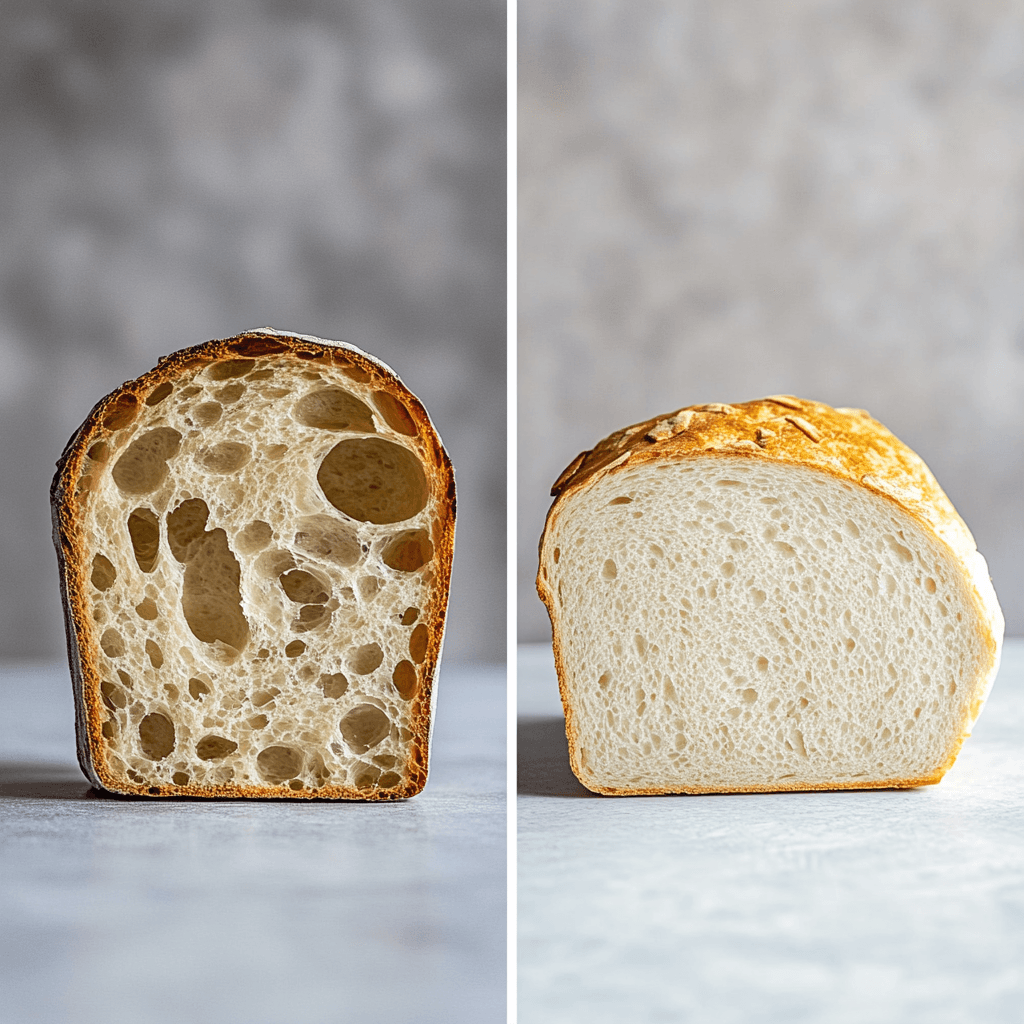The first time I tried to make authentic Italian bread using my standard white bread technique, the results were embarrassing. What I got was essentially white bread with a slightly different shape – dense, uniform, and completely missing that rustic, artisanal character that defines real Italian bread vs white bread differences.
Understanding Italian bread vs white bread isn’t just about recipes – it’s about completely different philosophies of bread making. After years of perfecting both styles, including mastering Gordon Ramsay’s approach to white bread, I can tell you that these differences go far deeper than most home bakers realize.
Fundamental Philosophy: Simplicity vs Enrichment
The core difference in Italian bread vs white bread lies in their basic approach to ingredients. Traditional Italian bread follows an ancient philosophy of “pane, acqua, sale, lievito” – bread, water, salt, yeast. That’s it. No eggs, no oil, no milk, no sugar.
White bread, particularly in American and British traditions, embraces enrichment. Eggs add richness and color, milk creates tenderness, sugar feeds yeast and adds subtle sweetness, and fats like butter or oil provide moisture and extend shelf life.
This fundamental difference affects everything else: texture, flavor development, crust formation, and storage characteristics. Food science research shows how these additions significantly alter gluten development and fermentation patterns.
Crust Development: Thick vs Tender
Italian bread deliberately develops a thick, chewy crust through high-heat baking and steam injection. The lack of fats and sugars allows for maximum crust development without burning. This creates that characteristic “crunch” that defines authentic Italian bread.
White bread aims for a tender, golden crust. The added fats coat gluten strands, creating a more tender crumb and softer crust. Eggs and milk contribute to browning through the Maillard reaction, but the goal is gentle golden color, not the deep, rustic darkness of Italian bread.
Interior Texture: Open vs Uniform
When comparing Italian bread vs white bread interior structure, the differences are dramatic. Italian bread seeks an open, irregular crumb with varying hole sizes – a sign of proper fermentation and gluten development without enrichment.
White bread prioritizes uniform, fine-grained texture. The added fats and eggs create a more consistent crumb structure that’s perfect for sandwiches and toast but lacks the rustic character of traditional Italian bread.
Fermentation Time: Slow vs Quick
Traditional Italian bread often uses longer fermentation periods – sometimes 12-24 hours with minimal yeast. This extended fermentation develops complex flavors and improves digestibility through partial protein breakdown.
Standard white bread recipes focus on convenience with shorter rise times, typically 1-3 hours total. Higher yeast quantities speed the process but sacrifice the depth of flavor that comes from extended fermentation.
Water Content and Hydration
Italian bread typically uses higher hydration ratios (water to flour), often 70-80%. This high moisture content contributes to the open crumb structure and requires different handling techniques.
White bread usually works with lower hydration (60-65%) for easier handling and more predictable results. The added fats help maintain moisture without requiring the higher water percentages.
Flour Considerations
Authentic Italian bread often uses “00” flour or bread flour with specific protein contents optimized for the particular regional style. The flour choice directly impacts the final texture and rise characteristics.
White bread typically uses standard bread flour or all-purpose flour, with the enriching ingredients compensating for variations in flour protein content.
Storage and Aging
Italian bread is designed to be consumed fresh, ideally within 24 hours. The lack of preservatives and fats means it stales quickly but can be refreshed with heat and steam.
White bread, with its fat content and sometimes added preservatives, maintains softness longer and tolerates room temperature storage for several days.
Understanding these Italian bread vs white bread differences helps you choose the right technique for your desired outcome and explains why you can’t simply substitute one approach for another. Whether you’re aiming for rustic Italian authenticity or the perfect enriched white bread, success depends on respecting each style’s unique requirements.
Stay safe, Jack Sullivan



